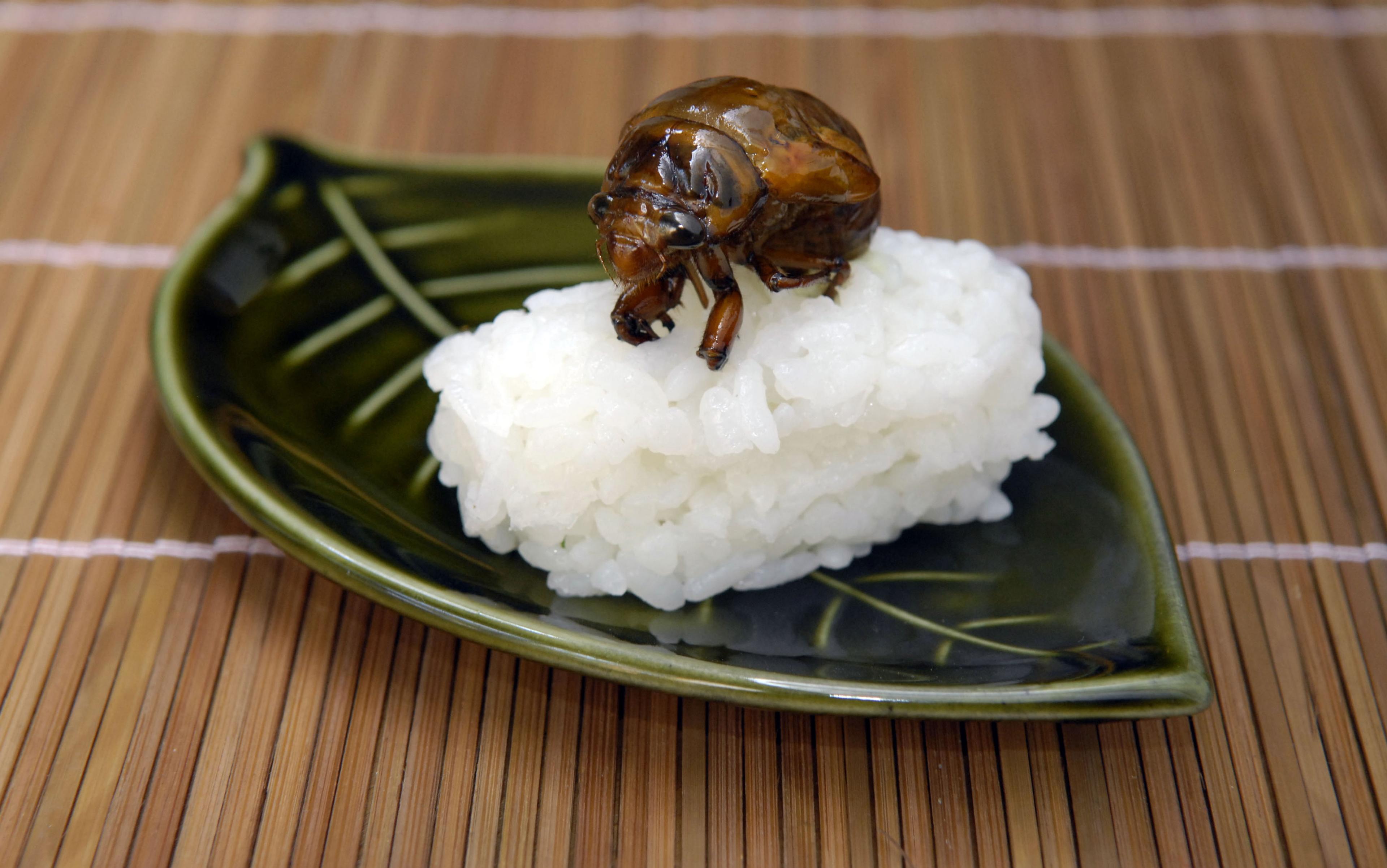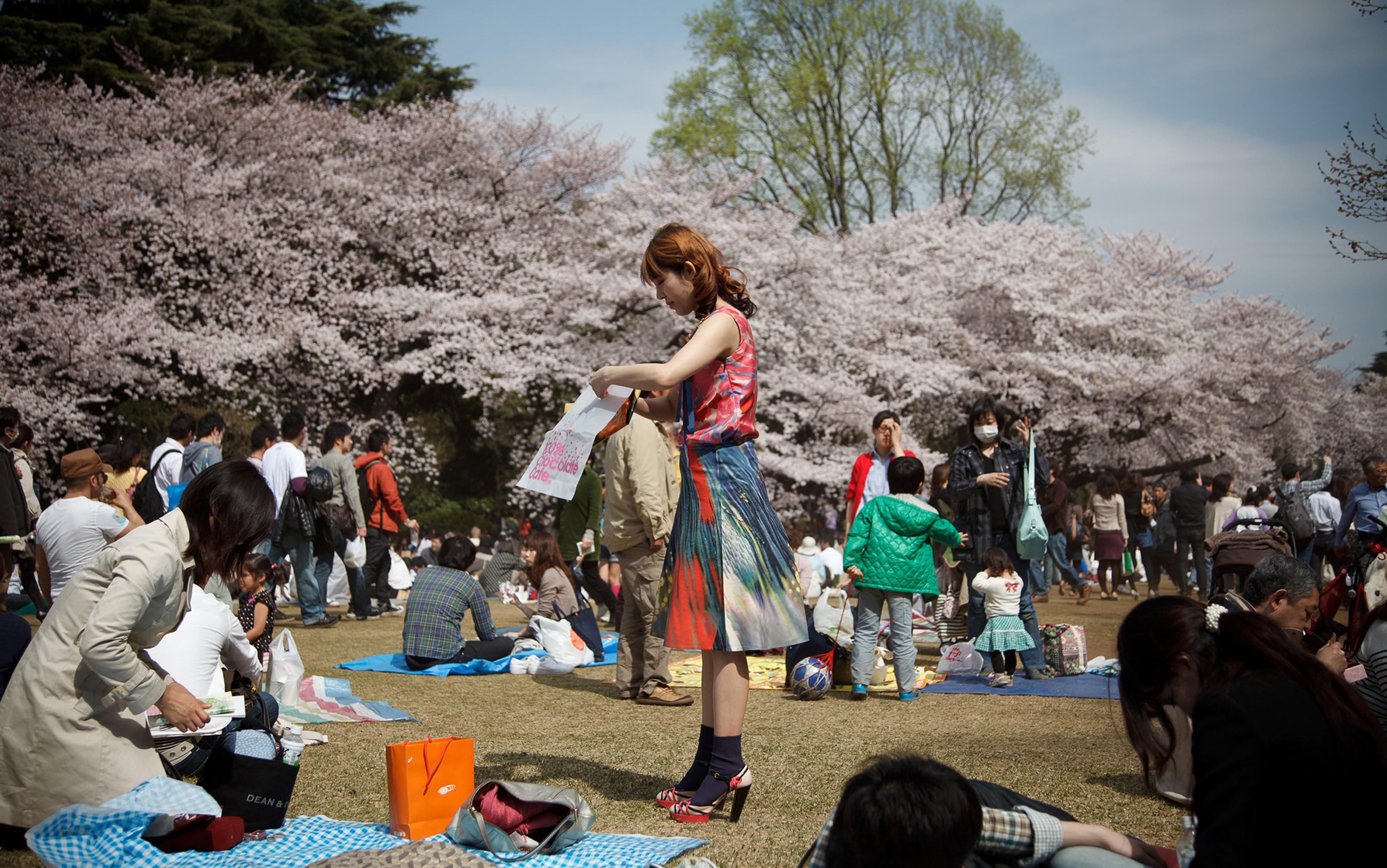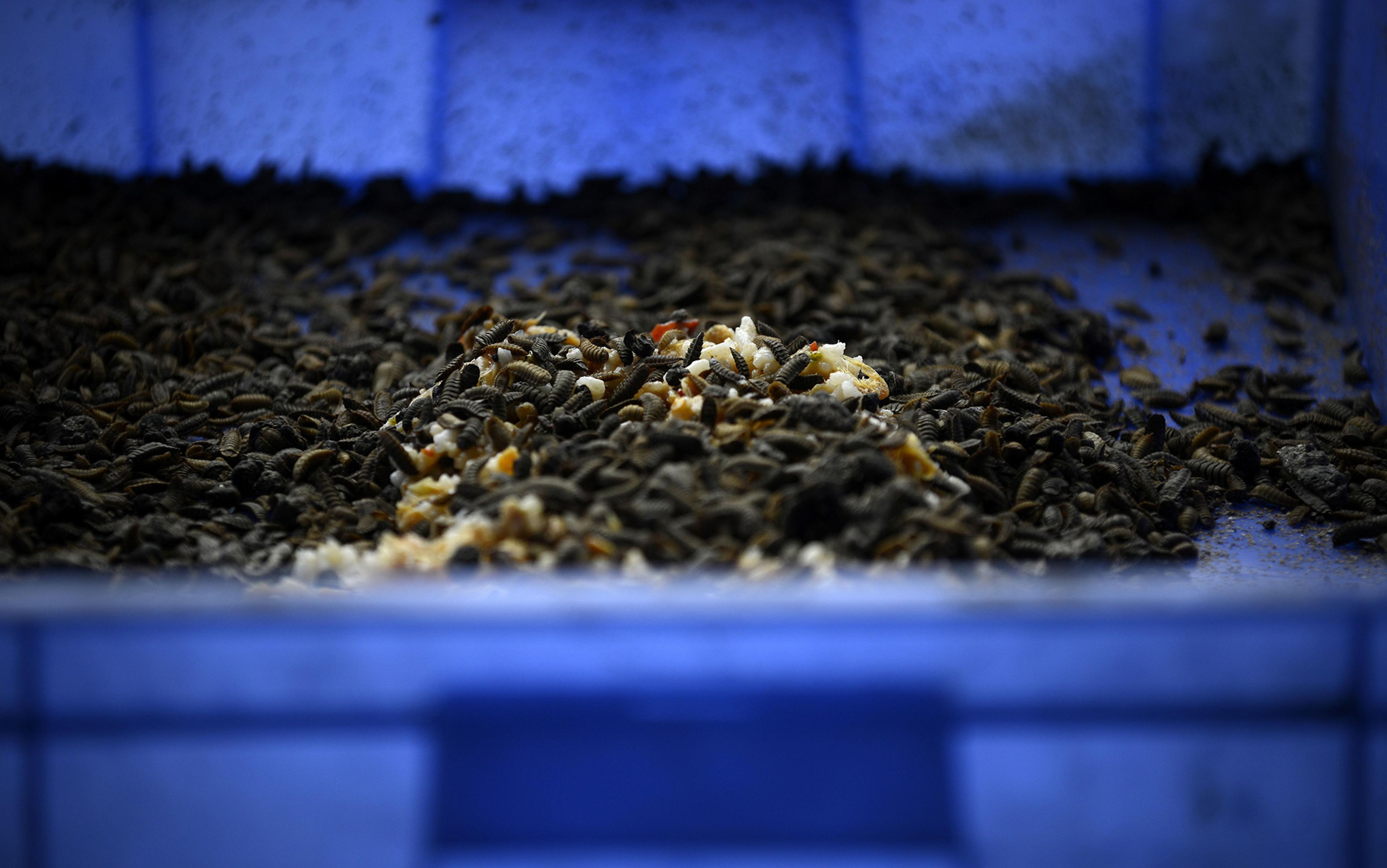I am standing in the cottage in the south of France where the entomologist Jean-Henri Fabre was born in 1823. Cooking utensils and a rosary hang on the wall. Through the window, the whitewashed village just beyond glows in the morning light.
Or so it seems. We are actually in the basement of a sleek building in downtown Tokyo. The view through the window is a cleverly lit painting in a hallway that leads to the rest of the Fabre Insect Museum.
Fabre would have found modern Tokyo harrowing: in 36 years, he never even visited the village neighbouring the rural estate where he spent his retirement. Yet it is the Japanese who remember Fabre best. In other parts of the world, only entomologists keep his memory alive, but here most people know his name, and many have read essays from his classic series, Souvenirs entomologiques (1879-1907). He is so well-known that 7‑Eleven convenience stores in Japan gave away Fabre-themed plastic figurines as part of a soft-drink promotion in 2005. One depicted the man himself. Another, a plastic dung beetle, complete with dung.
‘A vain wish has often come to me in my dreams,’ Fabre wrote in The Glow Worm and Other Beetles (1919). ‘It is to be able … to see the world with the faceted eyes of a Gnat.’ In Japan, Fabre found an audience with similar aspirations. Insects have been celebrated in Japanese culture for centuries. ‘The Lady Who Loved Insects’ is a classic story of a caterpillar-collecting lady of the 12th century court; the Tamamushi, or ‘Jewel Beetle’ Shrine, is a seventh century miniature temple, once shingled with 9,000 iridescent beetle forewings.
Insects continue to rear their antennae in modern Japan. Consider ‘Mothra’, the giant caterpillar-moth monster who is second only to Godzilla in film appearances; the many bug-inspired characters of ‘Pokémon’, and any number of manga (including an insect-themed detective series named after Fabre). Travel agencies advertise firefly-watching tours, there are televised beetle-wrestling competitions and beetle petting zoos. Department stores and even vending machines sell live insects.
Nor do the Japanese merely admire insects: they eat them too. In the Chūbu region, in central Japan, villagers rear wasps at home for food, and forage for giant hornets that are eaten at all life stages, while fried grasshoppers or inago are a luxury foodstuff. Entomophagy once had a place in Western culture too: the ancient Greeks ate cicadas, the Romans ate grubs. But while modern Westerners blithely eat aquatic arthropods – lobster, shrimp, crab, crayfish – we’ve lost our taste for the terrestrial kind.
Some historians say that Westerners stopped eating insects because they had easier sources of protein: most of the world’s domesticated mammals are native to Eurasia. Unable to pull a plough or provide leather and milk, even the tastiest grub was not worth the effort. Others say that modern Europeans stopped eating bugs to distinguish themselves from ‘primitive’ societies. Whatever the reason, the Western disgust for insects goes well beyond our plates.
I’m no entomophobe. I’ve had lab jobs sucking up beetles through a mouth aspirator, collecting moth eggs, and sacrificing tobacco hornworms to parasitic wasps. I’ve eaten caterpillar. Yet when I switch on the bathroom light and a leggy camel cricket launches itself at me, I surprise myself with a yelp of naked horror, followed by an expletive. Why the melodrama?
The US entomologist Jeffrey Lockwood, author of The Infested Mind: Why Humans Fear, Loathe, and Love Insects (2013), thinks such reactions are universal. ‘Our emotional response to insects on our bodies and in our homes is not merely a modern, socially-constructed phenomenon,’ he writes. ‘Rather, it is a vital part of being human.’ Evolution primed us to fear insects, he says, because of their capacity to sting, bite and spread disease. (Never mind that camel crickets spend their lives placidly munching mould. Perhaps our risk-averse brains lump all skittery things together.)
The argument that we are made to fear bugs is not unique to Lockwood. Philip Weinstein, an Australian professor of public and environmental health, describes the sensation as ‘an almost Jungian fear’. The UK epidemiologist and anthropologist Valerie Curtis, author of Don’t Look, Don’t Touch, Don’t Eat: The Science Behind Revulsion (2013), writes that our aversion to maggots and lice (along with other potentially disease-ridden stuff) is ‘a voice in our heads, the voice of our ancestors telling us to stay away from what might be bad for us’.
Yet despite their reputation, only a tiny percentage of insect species are harmful to humans. Cultural context, especially upbringing, clearly influences our feelings about them. Many Japanese children keep insects as pets. In the US, we are more likely to welcome reptiles and even rodents into our families. Lockwood reasons it thus: ‘What evolution has provided, culture has exploited.’
From the totalitarian ant society in T H White’s fantasy The Once and Future King (1958) to the vomiting monstrosity Jeff Goldblum becomes in the film The Fly (1986), Western culture has most often portrayed insects in a negative light. Franz Kafka’s novella The Metamorphosis (1915) betrays the depth of our disgust most vividly. Exceptions to the general rule exist, of course. Butterflies and ladybugs tend to escape harsh treatment, and the charismatic heroes of Roald Dahl’s James and the Giant Peach (1961) include a centipede, a grasshopper and a glowworm.
in a case against a ‘noxious host’ of beetles, the prosecution argued that these insects were not on Noah’s ark
Our prejudices might stem from Judeo-Christian beliefs about insects. By one count, the Bible includes just four positive and 46 negative references to them. The US cultural entomologist Charles Hogue noted in 1987 that: ‘Of the 10 plagues visited upon Egypt preceding the exodus, three were insects and two or three others may have had entomological connections.’ Yet as anyone who has experienced a swarm of locusts knows, the Biblical plagues are not so far-fetched. In fact, paleoclimatologists have recently found evidence of a drastic change in climate in ancient Egypt. That, along with a volcanic eruption that spread ash to the region, could have triggered most of the plagues, including those insect-related.
The Catholic Church has long grappled with the question of how a benevolent God could have created such creatures of torment. In the Middle Ages, ecclesiastical courts actually held judicial proceedings against weevils, locusts and other agricultural pests. A 1906 book on medieval animal trials by E P Evans notes that in a case against a ‘noxious host’ of beetles, the prosecution argued that these insects were not on Noah’s ark. They were instead ‘products of spontaneous generation perhaps, or more probably creations of the devil’. The guilty beetles were banished and exorcised which, Evans notes, did not persuade them to leave.
Modern theologians still contend with the problem of the insect. The Anglican priest and animal welfare advocate Martin Henig recently gave a sermon in Wales on the subject. He concluded: ‘we have no right to reject any of God’s creatures as vermin’. But, he conceded, it is difficult ‘to reconcile creation seen from this angle of predation and parasitism with a generous God who creates and redeems all creation, every bit of it’.
In traditional haiku, by contrast, insects tend to symbolise the change of season. As the 18th century poet Kobayashi Issa writes:
Autumn cicada –
flat on his back,
chirps his last song.
‘In old Japanese literature, poems upon insects are to be found by thousands,’ wrote Lafcadio Hearn, a 19th century European-American writer who became a Japanese citizen. ‘What is the signification of the great modern silence in Western countries upon this delightful topic?’
Not all Japanese, perhaps not even the majority, admire insects. But while Western culture amplifies our perhaps innately human suspicion of insects into distaste and fear, Japanese culture encourages affection, even reverence, for the six-legged. Why?
Daisaburo Okumoto is director of the Fabre Insect Museum. An avid insect‑collector and a scholar of French literature, he has translated many of Fabre’s works. He ascribes the popularity of insects in Japan to national character. ‘It seems like Japanese eyes are like macro lenses and Western eyes are wide-angle,’ he says. ‘A garden in Versailles, it’s very wide and symmetrical. But Japanese gardens are continuous from the room and also very small. We feel calm when we look at small things.’
Traditional Japanese pursuits such as origami, bonsai and painting do often exhibit an appreciation for the small and exquisitely detailed. But Japan’s love of insects might simply be an offshoot of a wider veneration for nature as a whole. Nature and the seasons have had an ‘enormous impact across more than 1,000 years of Japanese cultural history, not only in poetry, painting and the traditional arts but also in a wide range of media, from architecture to fashion,’ writes Haruo Shirane, professor of Japanese literature and culture at Columbia University in New York. Despite urbanisation and industrialisation, this devotion to nature and natural symbols persists in modern Japan, in the design of everything from manhole covers to baked goods.
Ask one of Japan’s many insect collectors why the hobby is so popular, and he (it’s almost always a he) will likely bring up this cultural affinity for nature and its historical roots in Japanese spirituality.
‘Japan’s original religion is Shintoism, and Shinto is a kind of animism, a worship of nature,’ says Kenta Takada, a businessman and longhorn beetle collector who writes articles on Japanese insect culture for entomology journals. ‘Our sense of beauty comes from that.’ Shintoism emphasises that everything in nature, including human beings, is the creation of the spiritual dimension and thus worthy of reverence. Takada also cites Mono no aware, a concept with roots in Zen Buddhism. The phrase refers to a poignant awareness of the transience of all things.
‘There are many more people advocating for mammals or birds or fish than there are for beetles or grasshoppers’
The medieval Japanese monk Yoshida Kenkō put it this way: ‘If man were never to fade away like the dews of Adashino, never to vanish like the smoke over Toribeyama, how things would lose their power to move us! The most precious thing in life is its uncertainty.’
You can hardly get more transient than an insect; some adult mayflies live for just half an hour.
Insects matter, and our choice to appreciate or revile them can decide their fate. ‘They’re the ones who clean up the carcasses and deal with the coyote poop,’ says Matthew Shepherd, communications director for the Xerces Society, an invertebrate conservation organisation. Insects provide protein for many of the furred and feathered charmers we love. They pollinate our food crops and provide materials ranging from silk to cochineal to honey. ‘They’re the backbone,’ Shepherd says. ‘Well, that’s not quite right, is it? They don’t have a skeleton – they’re the underlying thing holding it all together.’ Yet for all their abundance (over 95 per cent of all animal species), invertebrates garner around 10 per cent of conservation funding.
‘When you start looking at endangered species lists in this country, you realise that insects are sorely underrepresented,’ Shepherd says. ‘There are many more people advocating for mammals or birds or fish than there are for beetles or grasshoppers.’ He points out that, of the roughly 100,000 insect species in North America, fewer than two per cent have been given a common name by the Entomological Society of America. Most that have names are pests.
It’s hard to say whether a greater affection for insects in Japan has led to more robust conservation. Though Japan is smaller than California, entomologists estimate that it has nearly as many insect species as the US as a whole. Many of those species are in decline, however, as in other parts of the world, and only the most well-known are targeted for protection. Still, public appreciation of insects is quite visible. Some of the few dragonfly nature reserves in the world are in Japan, and firefly and butterfly appreciation clubs have spearheaded the protection of habitat all over the country.
As of 2003, Japan has around 500 organisations dedicated to preserving a type of landscape for which most languages don’t even have a word: satoyama, a patchwork of human settlement and natural areas, usually located where mountain meets plain. The ‘natural’ areas are actively managed, using traditional techniques such as controlled burns and planting trees that complement local soil composition. No one species of vegetation is allowed to dominate, so satoyama supports a certain level of biodiversity while simultaneously providing wild foods and other resources to residents. It is, in short, an ancient attempt at sustainability.
As urbanisation increases and agriculture declines in Japan, satoyama is disappearing. In Insect Conservation: Past, Present and Prospects (2012), the entomologists Minoru Ishii and Yasuhiro Nakamura argue that, if the many efforts to preserve satoyama (and the many endangered organisms that live there) are successful, ‘it is hoped that the decline in Japanese insects will be halted and recover’.
Majestic mountains, redwoods and polar bears sell the calendars. Weevils and crane flies are not invited to the photo shoot
But Catherine Knight, a New Zealand-based scholar of Japan’s environmental history, believes that the push to preserve satoyama has as much to do with ingrained cultural beliefs as a desire to preserve threatened species. ‘The concept of satoyama as an ideal of sustainable agriculture supports a much-purported view that the Japanese have traditionally lived in harmony with nature,’ she wrote in a 2010 article in The Kyoto Journal. The ‘harmony with nature’ stereotype is popular among Japanese and foreigners alike, though an easy one to deflate. Extensive deforestation began more than 1,000 years ago; wolves in Japan were hunted to extinction by 1905; and the current government has pledged to continue ‘research whaling’ despite international condemnation. Nature has suffered in Japan as under most civilisations.
Yet the nostalgia for satoyama says something about the popular perception of nature in Japan. Satoyama is a landscape that by definition includes humans. It is local and accessible, the natural world within arm’s reach. The intimate relationship one inherently forms with the landscape in satoyama is just the thing to make one fall in love with insects.
In the US, ‘nature’ is epic, free of roads and power lines, and generally far away. Majestic mountains, redwoods and polar bears sell the calendars. Weevils and crane flies are not invited to the photo shoot. In his article ‘Imagining an Everyday Nature’ (2010), the US environmental literature scholar Scott Hess writes that on a series of road trips to spectacular wilderness areas with which he had no connection, he felt like ‘a bee gathering nectar without a hive’. Our vision of nature, he says, is too often based on ‘a model of Romantic imaginative escapism’. Nature is everywhere that human beings are not.
As the global population expands, along with its corresponding need for resources, the notion of wilderness is likely to become increasingly theoretical. And if we are to maintain any semblance of a natural world outside those constricted areas, we will need to be less dogmatic about what is human and what is natural. The first step is to become friendly with our fellow organisms. The US psychologist James Hillman suggested in his 1988 essay ‘Going Bugs’ that ‘we must start not in their splendor – the horned stag, the yellow lion and the great bear, or even old faithful “spot” – but with those we fear the worst – the bugs’. In its regard for the ephemeral and the familiar in nature, Japanese culture has got something right.
Research shows that children develop the strongest environmental ethos through everyday contact with nature. Insects are good candidates for this contact. They are small and abundant, and they have one other virtue besides: they’re everywhere. Even the dark corners of my bathroom, the bastards.
Reporting for this essay was supported by the U.S.-Japan Foundation, through the International Center for Journalists.






